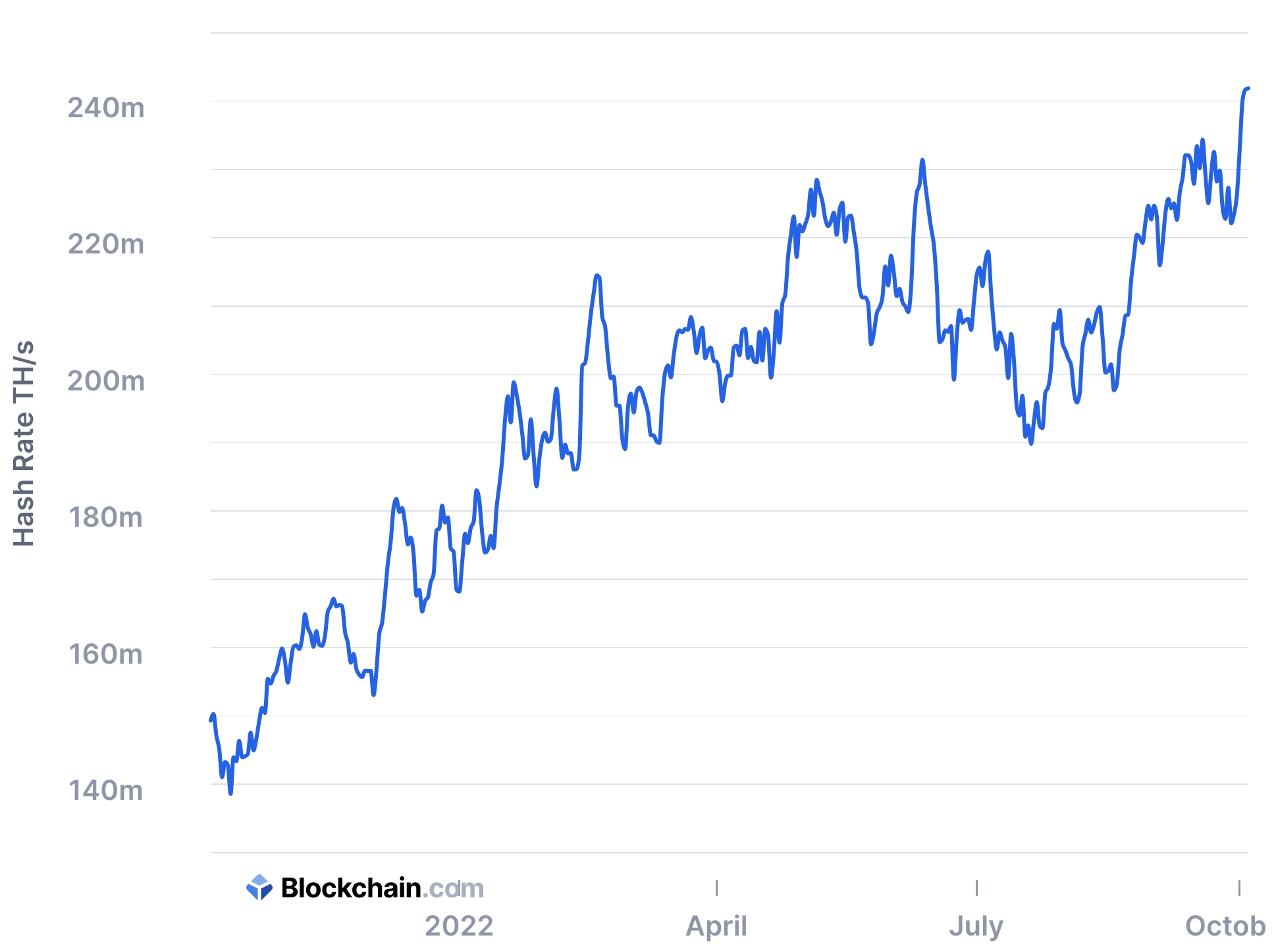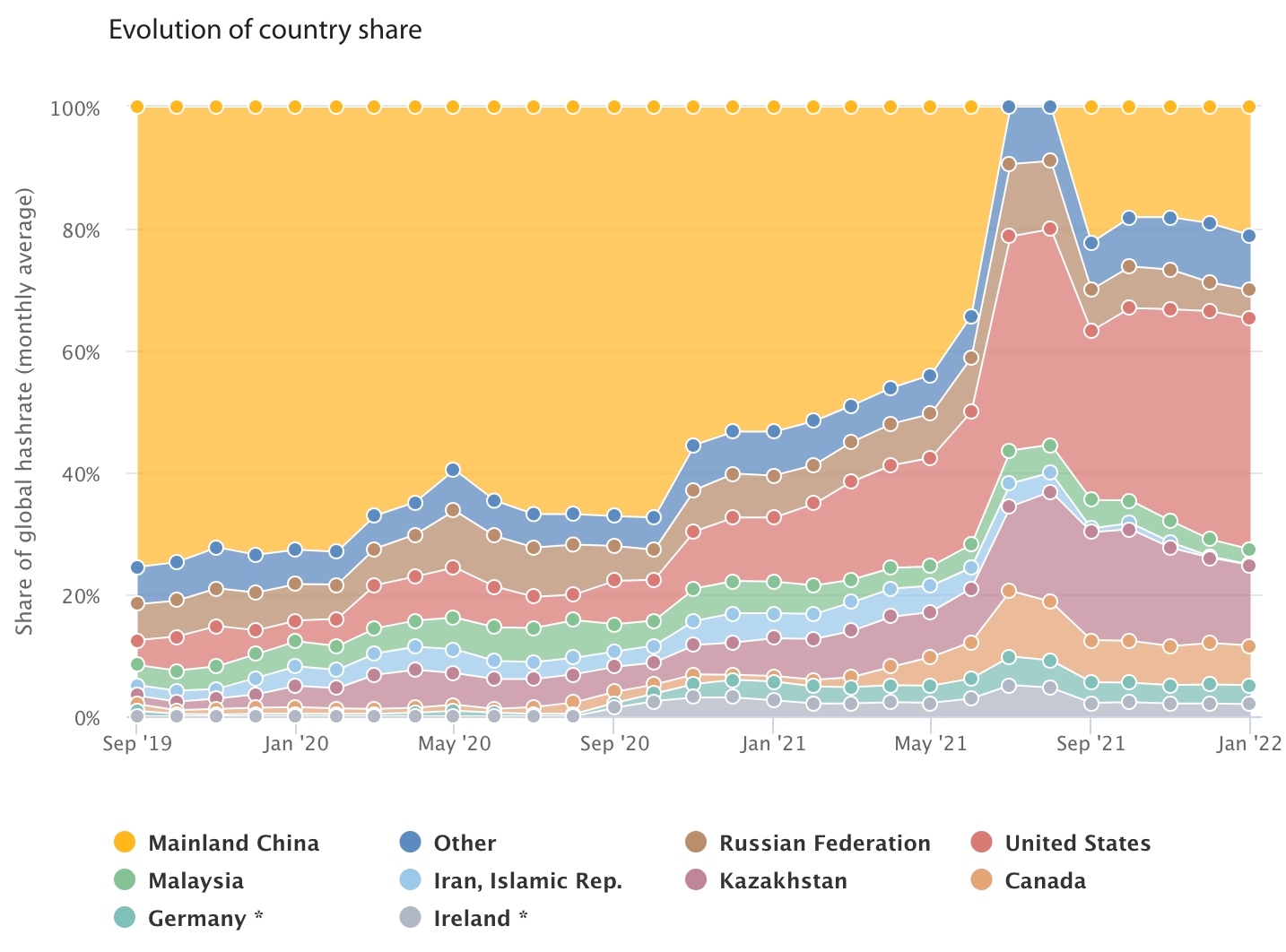Bitcoin Hashrate Hits a New All-Time High – What Does This Mean for BTC Price?

The total hashrate on the Bitcoin (BTC) network reached a fresh all-time high on Tuesday, despite consistently low bitcoin prices. The increase could be a sign that miners are now more optimistic about the bitcoin price.
According to data from Blockchain.com, the total hashrate this week reached 241.88 Ehash/s, up significantly from this year’s low from early January of 168.2 Ehash/s.
The all-time high was reached when looking at the data on a 7-day moving average basis, an often-used way to smooth out shorter-term fluctuations in the hashrate on the Bitcoin network.
The hashrate is a measure of the computing power that is dedicated to mining Bitcoin and securing the network. An increasing hashrate thus means that more mining machines are coming online, which could signal rising optimism among miners about bitcoin prices going forward.
The rise in hashrate is notable given that the bitcoin price has largely trended lower this year, and has remained stuck in a consolidation zone between close to $18,000 and $25,000 since mid-June this year.
The prior peak for the hashrate was in mid-June, when total hashrate reached 231.4 Ehash/s on a 7-day moving average basis. Since then, the key metric trended lower until it bottomed in mid-July at around 190 Ehash/s.

Since China cracked down on all forms of crypto mining last year, the Bitcoin network has seen a large migration of miners out of China and to the US and other places that have been more welcoming.
According to figures from early this year from the Cambridge Centre for Alternative Finance (CCAF), the US has the largest share of hashrate with 37.8%. Interestingly, however, China also remains a major hub for Bitcoin mining, with 21.1% of the global hashrate.

In October last year, researchers at CCAF first reported that the US had become the largest Bitcoin mining hub, followed by Kazakhstan and Russia.




